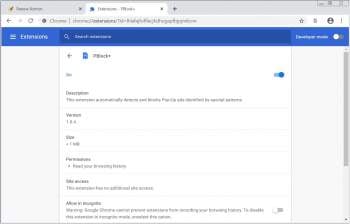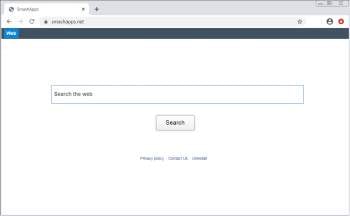-
Microsoft will roll out MFA-enforcing policies for admin portal access
Microsoft will roll out Conditional Access policies requiring multifactor authentication from administrators when signing into Microsoft admin portals such as Microsoft Entra, Microsoft 365, Exchange, and Azure.
- November 06, 2023
- 03:00 PM
 3
3
-
New Microsoft Azure AD CTS feature can be abused for lateral movement
Microsoft's new Azure Active Directory Cross-Tenant Synchronization (CTS) feature, introduced in June 2023, has created a new potential attack surface that might allow threat actors to more easily spread laterally to other Azure tenants.
- August 03, 2023
- 06:55 PM
 1
1
-
Microsoft still unsure how hackers stole Azure AD signing key
Microsoft says it still doesn't know how Chinese hackers stole an inactive Microsoft account (MSA) consumer signing key used to breach the Exchange Online and Azure AD accounts of two dozen organizations, including government agencies.
- July 14, 2023
- 04:18 PM
 4
4
-
Microsoft rebrands Azure Active Directory to Microsoft Entra ID
Microsoft announced today that it would change the name of its Azure Active Directory (Azure AD) enterprise identity service to Microsoft Entra ID by the end of the year.
- July 11, 2023
- 12:28 PM
 7
7
-
Grafana warns of critical auth bypass due to Azure AD integration
Grafana has released security fixes for multiple versions of its application, addressing a vulnerability that enables attackers to bypass authentication and take over any Grafana account that uses Azure Active Directory for authentication.
- June 24, 2023
- 11:18 AM
 0
0
-
Microsoft fixes Azure AD auth flaw enabling account takeover
Microsoft has addressed an Azure Active Directory (Azure AD) authentication flaw that could allow threat actors to escalate privileges and potentially fully take over the target's account.
- June 20, 2023
- 12:38 PM
 0
0
-
Bing search results hijacked via misconfigured Microsoft app
A misconfigured Microsoft application allowed anyone to log in and modify Bing.com search results in real-time, as well as inject XSS attacks to potentially breach the accounts of Office 365 users.
- March 30, 2023
- 01:05 PM
 0
0
-
New CISA tool detects hacking activity in Microsoft cloud services
The U.S. Cybersecurity & Infrastructure Security Agency (CISA) has released a new open-source incident response tool that helps detect signs of malicious activity in Microsoft cloud environments.
- March 23, 2023
- 02:34 PM
 0
0
-
Microsoft announces passwordless auth, SSO for Azure Virtual Desktop
Microsoft has announced this week that Azure Virtual Desktop support for passwordless authentication has now entered public preview.
- September 27, 2022
- 09:01 AM
 0
0
-
Microsoft updates Azure AD with support for temporary passcodes
Azure Active Directory (Azure AD) now allows admins to issue time-limited passcodes that can be used to register new passwordless authentication methods, during Windows onboarding, or to recover accounts easier when losing credentials or FIDO2 keys.
- July 01, 2022
- 12:05 PM
 1
1
-
Microsoft to force better security defaults for all Azure AD tenants
Microsoft has announced that it will force enable stricter secure default settings known as 'security defaults' on all existing Azure Active Directory (Azure AD) tenants starting in late June 2022.
- May 27, 2022
- 11:59 AM
 0
0
-
Microsoft blocked billions of brute-force and phishing attacks last year
Office 365 and Azure Active Directory (Azure AD) customers were the targets of billions of phishing emails and brute force attacks successfully blocked last year by Microsoft.
- February 03, 2022
- 11:35 AM
 1
1
-
Microsoft warns of multi-stage phishing campaign leveraging Azure AD
Microsoft's threat analysts have uncovered a large-scale, multi-phase phishing campaign that uses stolen credentials to register devices onto the target's network and use them to distribute phishing emails.
- January 27, 2022
- 01:11 PM
 1
1
-
CISA releases tool to review Microsoft 365 post-compromise activity
The Cybersecurity and Infrastructure Security Agency (CISA) has released a companion Splunk-based dashboard that helps review post-compromise activity in Microsoft Azure Active Directory (AD), Office 365 (O365), and Microsoft 365 (M365) environments.
- April 08, 2021
- 05:39 PM
 0
0
-
CISA releases new SolarWinds malicious activity detection tool
The Cybersecurity and Infrastructure Security Agency (CISA) has released a new tool to detect post-compromise malicious activity associated with the SolarWinds hackers in on-premises enterprise environments.
- March 18, 2021
- 03:56 PM
 2
2
-
Microsoft explains the cause of yesterday's massive service outage
Microsoft has shed some light on the root cause behind yesterday's massive Azure authentication outage that affected multiple Microsoft services and blocked users from logging into their accounts.
- March 16, 2021
- 02:36 PM
 3
3
-
Microsoft upgrades password spray attack detection capabilities
Microsoft has improved password spray detection in Azure Active Directory (Azure AD) by doubling the number of compromised accounts it detects using a new machine learning (ML) system.
- October 26, 2020
- 02:45 PM
 0
0
-
Microsoft disrupts nation-state hacker op using Azure Cloud service
In a report today, Microsoft said that it disrupted operations of a nation-state threat group that was using its Azure cloud infrastructure for cyber attacks.
- September 25, 2020
- 05:22 AM
 0
0
-
New Microsoft 365 sign-in pages already spoofed for phishing
Microsoft says that attackers have already adapted their phishing campaigns to use the newly updated design for Azure AD and Microsoft 365 sign-in pages.
- May 14, 2020
- 02:58 PM
 0
0
-
Microsoft Enables Security Defaults in Azure Active Directory
Microsoft introduced new secure default settings dubbed 'Security Defaults' to Azure Active Directory (Azure AD), now available for all license levels, including trial tenants.
- January 10, 2020
- 11:49 AM
 1
1
- 1
- 2
























